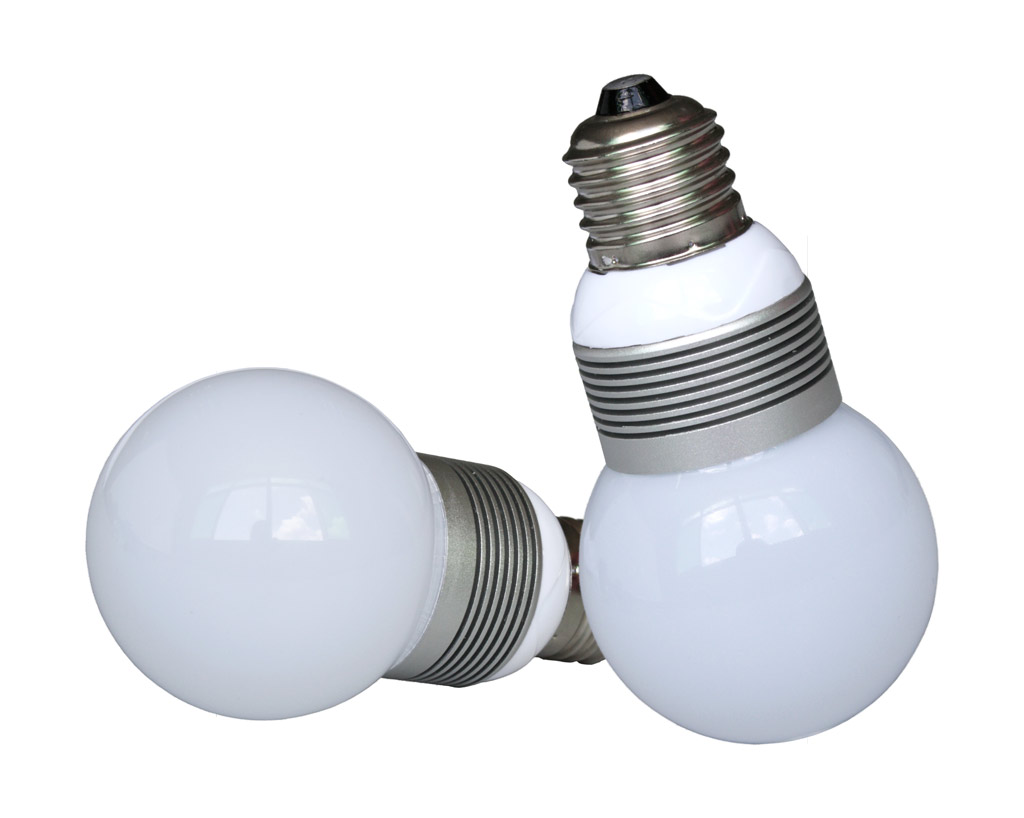LED light bulbs which have been heralded for combining superior quality lighting with extreme energy and cost savings are now becoming increasingly affordable and are close to the tipping point of mass adoption.
The 60 watt bulbs have only made their way to retailers over the past year and typically at prohibitive 30 to 40 dollar price points. Recent sales of 60 watt equivalents at big box retailers such as Home Depot and Menards have seen price drops to under 15 dollars a bulb and we can safely expect the 10 dollar price point to be broached by later this year.
LED light bulbs, initially treated with skepticism by many consumers who already experienced disappointment with the lighting quality of compact florescent light bulbs, were puzzled by the obligatory heat sink at the base of the bulbs. The recent dramatic declines of the price of the bulbs has finally made this accessible to average consumers coupled with the awareness that they are even more energy efficient than compact fluorescents. From here we can expect a broad base of consumers making the migration as prices continue to fall.
LED light bulbs seem to be the obvious choice for lighting in the future, often expending less than one-eighth the amount of energy for the same amount of illumination in comparison to incandescents. In addition unlike CFL’s they are dimmable, turn on immediately and give off a better quality of light. The color rendering index on most LED bulbs in the 80s with some being in the 90’s. Color rendering index or CRI can best be described as how many different colors in the spectrum are contained in the white light so an inordinately low number ratings below 80 results in a bleak and washed out lighting that is harsh and unpleasant to the eye.
Another attraction to LED lighting is the sheer longevity of the bulbs which typically will last 10 to 20 years with some bulbs including a 10 year warranty. This has made them very desirable for applications where the fixtures are difficult to access and has made them a favorite of outdoor lighting on taller buildings even before the recent dramatic price drops. While some of us will still be waiting for the 75 and 100 watt equivalents to come down in price (they still hover in the 30 dollar range) the trend downward is a good indicator that the higher watt bulbs will soon follow suit.
Some manufactures have taken LED lighting a step further, as my own nephew demonstrated to me over the holiday season last year. He gave me a first hand view of the Apple phone app that worked in conjunction with Philips Hue LED light bulbs which allowed him to change the color of the actual lights, program them to go on and off, and allow for dimming all through his iphone, which would even be possible regardless of his distance from the house. While most of us might not be asking for this type of capability, this illustrates the possibilities and aside from a steep price (200 dollars) for a three bulb set, we can expect more in the way of smart lighting in the near future.
Another important factor in LED lighting is the fact that the bulbs don’t contain any Mercury making these more friendly to the environment. Another point also worth noting is the fact the technology is still improving from an efficiency standpoint and 75% to 85% less energy expended may likely be 90% to 95% within a decade or so. In this sense the horizon looks bright for LED light bulbs with the economies of scale falling into place along with numerous companies fighting for market share. We can easily see this being the dominant form of lighting globally within a few short years. LED lighting accounted for about 1.5 billion dollars in 2012 but will increase to 8 billion by 2015.
All LED light bulbs have a heat sinks close to the base which allows for the dissipation of heat as a result the glass of the bulb doesn’t get hot thus allowing the bulb to run more efficiently. The only downside that has been articulated is a gradual decrease in the amount of lumens after several years although this would be true of all kinds of lighting.
The availability of a superior quality lighting without any of the drawbacks of CFL lighting should also de-politicize the switch away from old fashioned incandescent lighting and the efficiency and resultant cost saving without sacrifice of quality will make this one of the largest growth markets of this decade. In the past few years this revolution in lighting has made it’s way into autos, incidental outdoor lighting, flat screen and handheld back lighting, and is now poised to make it’s way into indoor lighting. This may be a prime example of technology and innovation improving the quality of life for everyone and in the end everybody wins.
<strong>Aticle Written by:</strong> David Mazovick
[nggallery id=17]


